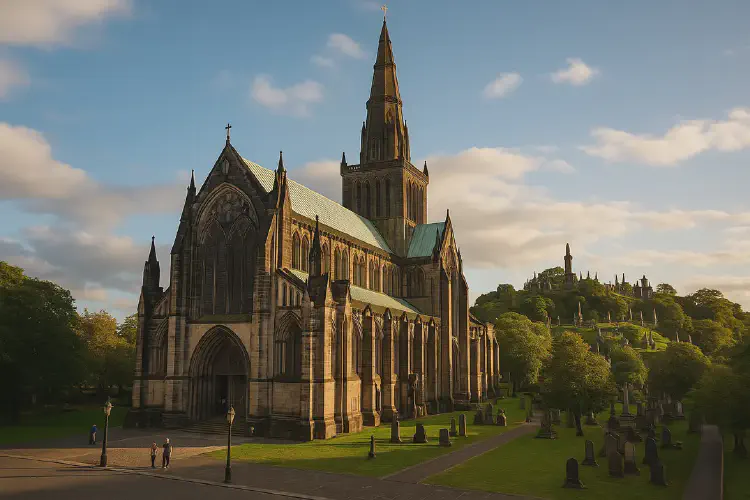Glasgow Cathedral and Necropolis
Glasgow Cathedral and the Necropolis together form one of the city’s most atmospheric and historically rich areas. They reveal Glasgow’s medieval roots and Victorian grandeur side by side.
- Scotland Tours
- 2 min read

Glasgow Cathedral
Also known as St. Mungo’s Cathedral, this magnificent Gothic building is the oldest cathedral on the Scottish mainland to have survived the Reformation intact. Built between the 12th and 15th centuries, it stands on the site where St. Mungo, the city’s patron saint, is believed to have founded his church in the 6th century.
Inside, visitors can admire soaring stone arches, intricate stained glass windows, and the crypt containing the shrine of St. Mungo. The cathedral remains an active place of worship and a symbol of continuity in Glasgow’s history.
The Necropolis
Behind the cathedral lies the Glasgow Necropolis, a vast Victorian garden cemetery often called the ‘City of the Dead.’ It was established in 1833 and holds over 50,000 graves, including those of prominent Glaswegians.
The Necropolis is famous for its elaborate monuments, designed by leading architects and sculptors of the time. Walking its winding paths offers not only historical insight but also breathtaking views of the city skyline.
Cultural and Historical Importance
- The cathedral reflects Glasgow’s medieval spiritual and civic importance.
- The Necropolis symbolizes the city’s 19th-century wealth and ambition during the Industrial Revolution.
- Together, they showcase the continuity of life, faith, and memory across centuries.
Why Visitors Shouldn’t Miss It
For travelers, the Cathedral and Necropolis are more than landmarks—they are storytelling spaces. Here, medieval devotion meets Victorian pride, all set against the backdrop of modern Glasgow. Exploring them offers a deep sense of the city’s layered past.